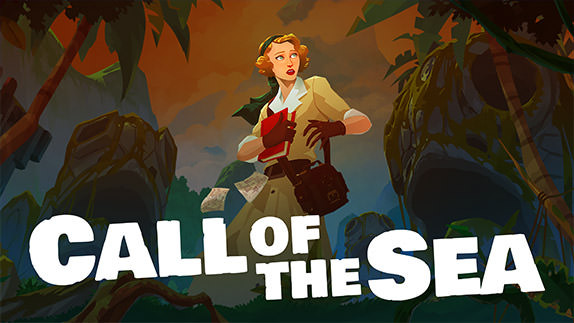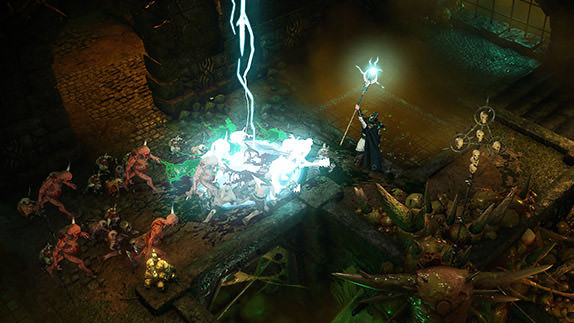For Honor Review

 By Kevin Mitchell | February 23, 2017
By Kevin Mitchell | February 23, 2017
Ubisoft's medieval fantasy action fighting game, pitting some of the most iconic soldiers in history against each other, doesn't make too much sense, but that's part of the charm. The three different factions, representing knights, samurai, and Vikings, are uniquely different yet balanced enough to allow players to choose any faction without feeling shortchanged. Not quite a pure multiplayer-focused action game, For Honor combines fighting game mechanics that give every action a realistic weight, ensuring players feel each punishing blow that will lead their faction to victory.
Although For Honor is primarily a multiplayer game requiring a constant online connection to play, it includes a lengthy single-player narrative that tries to make sense of the almost comical premise. Acting as a pseudo-tutorial, the campaign is divided into three main chapters, one for each faction, all of which can be completed solo or cooperatively with another player online. Peace has fallen over the lands, angering the bloodthirsty warlord Apollyon as she attempts to instigate a never-ending war between the factions. With multiple difficulty settings, it's a good idea to play through some or all of the campaign before venturing online, as you'll learn not only the basic game mechanics but also some of the more advanced elements, such as character feats. The core gameplay mimics the multiplayer, and the characters use the same models.
The combat mechanics in For Honor are designed around one-on-one battles, blending fighting game mechanics with hack-and-slash action. Although the gameplay is best suited for combat against a single opponent, you'll consistently have to deal with multiple foes simultaneously. Each of the game's twelve characters is separated into unique class types that determine their movement ability and weapon types. With a flick of the right stick, you can adjust your weapon's position from side to side or directly above your head. This is used for not only defending against incoming attacks but also defining where your strikes will land. The more advanced mechanics add parries to leave your opponent in a vulnerable state, feints to outthink your foe, and guard breaks to throw them into nearby pits, spikes, or other parts of the environment.
For Honor is not a game for button mashers, even though many people play traditional fighting games that way. With a rechargeable stamina meter, swinging for the fences repeatedly will leave your character gasping for air. Regardless of which multiplayer mode you choose, encounters have a certain amount of tension. Feeling like a Hollywood blockbuster movie, engagements usually begin with both characters circling, feeling each other out. Everyone can see where you are currently aiming, and it starts a mind game of sorts as you try to goad your opponent into making a mistake. Of course, when a third or fourth character comes within proximity, things become quite more complicated.
Duels test your wits against a single opponent, while Brawls are team battles, with both modes removing the AI minions. Dominion is the game's control point mode, where teams of four battle over three different points on a map, with AI minions always fighting over the middle control point. Being outnumbered in a fight will be a common occurrence in this game mode, making it even harder to block attacks. However, to counter being outnumbered, all players have a revenge meter that fills up when you block and take damage. Upon activation, nearby enemies will be knocked to the ground, giving you a chance to fight against both or run for safety.
At first, I thought I wouldn't have to worry about choosing a main character to learn, and I would easily make a choice between any of the characters on a per-game basis. However, each character has a unique moveset of combos, unblockable attacks, and other special abilities. As you play, you'll level up each individual character, earning new unlockables and better gear. Every piece of equipment, from your armor to the various points of your weapon, can be improved. The game also offers deep appearance options, ensuring your Warden won't look the same as another player's. Outside of earning gear after completing matches, you can purchase crates with in-game currency. Daily missions, called "orders," allow you to gain a decent amount each time you play, but you also gain a small amount with every match. Some of the most expensive items are simply cosmetic, such as new taunts, executions, or armor designs.
If you must have flaming wings coming from your knight's back or have Japanese cherry blossom petals surround your character, you can purchase steel (the currency) with real-life money. Since it is strictly optional and doesn't affect gameplay, I have no issues with these types of items for sale. However, you can unlock all of a character's feats through micro-transactions, which does raise an eyebrow in the "pay-to-win" category.
All of the game's multiplayer modes feed into the overall faction-based metagame. The regional map is split between the three factions, showing the current status across all platforms. When you first boot the game, you must choose a faction to represent, although you are free to use any character regardless of your faction. For example, I love playing the Valkyrie, a Viking, but I represent The Chosen, the samurai faction. As you play, you'll earn war assets based on your performance. These can be distributed to ongoing battles on the map. As the timer counts down every six hours, it will refresh, shifting controlled territories between the three factions. At the end of a season, which lasts ten weeks, a winner will be declared. As we are still in the first season, I am curious to see what type of ornament rewards Ubisoft will be giving the winning faction.
Regardless of the platform, the game runs fairly smoothly, but as all online matches are based on a peer-to-peer setup, you'll occasionally encounter matches with additional latency. Thankfully you don't have to wait long for matches, as AI-controlled bots will battle against each other, allowing you to take their place, or they will take over for players that disconnect. Say what you want about the competitive nature of player versus player, but the bots in the game are not easily defeated. If you don't wish to face other players online, you can set your preference to only fight against bots, allowing you to team up with other players but never have to worry about actually fighting another player.
Simply Put
Although I never considered myself a competitive fighting game enthusiast, I found both the combat mechanics and the flow of engagement in For Honor refreshing. Individual matches don't overstay their welcome, and it's a hard game to put down due to the faction metagame. Seeing your faction losing a territory is a strong incentive to place additional war assets, requiring you to play one more match. Not to mention the game has additional legs with a rewarding loot system and customization options.
Note: For Honor was reviewed on PlayStation 4. A physical copy of the game was purchased by SelectButton.




